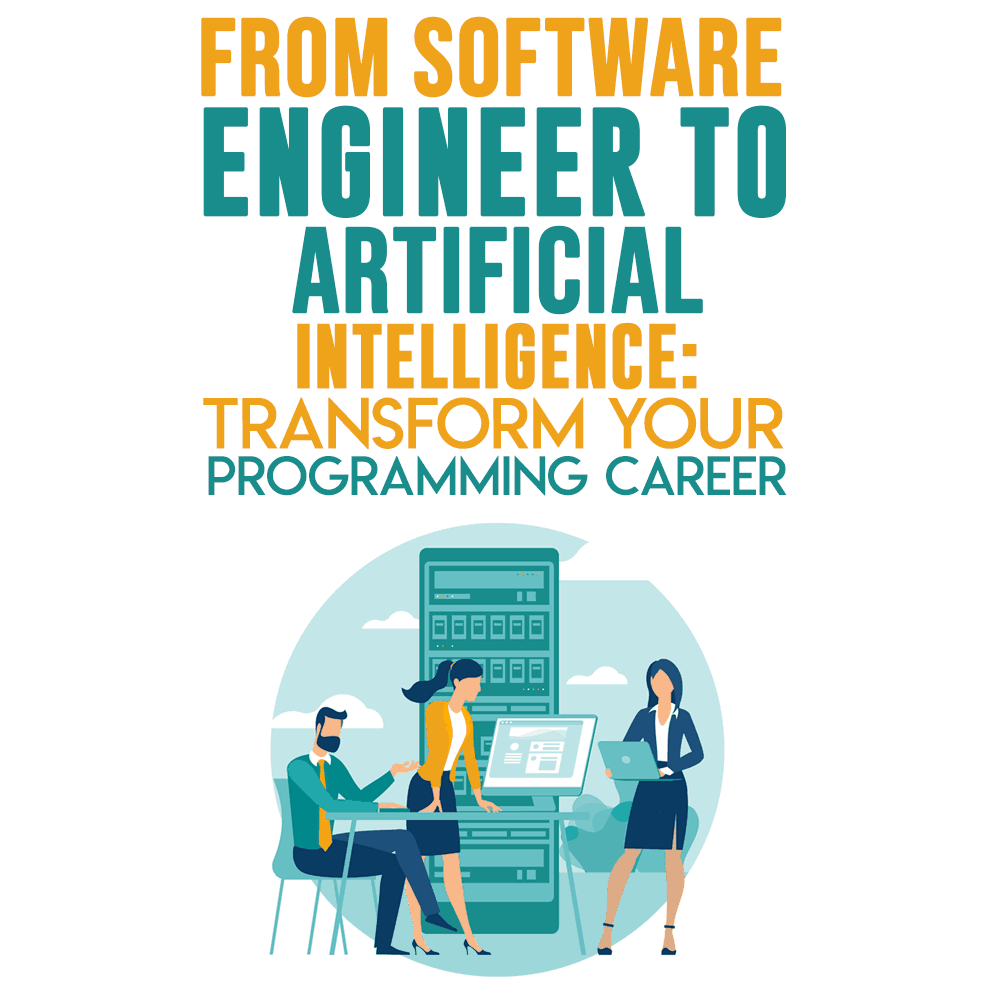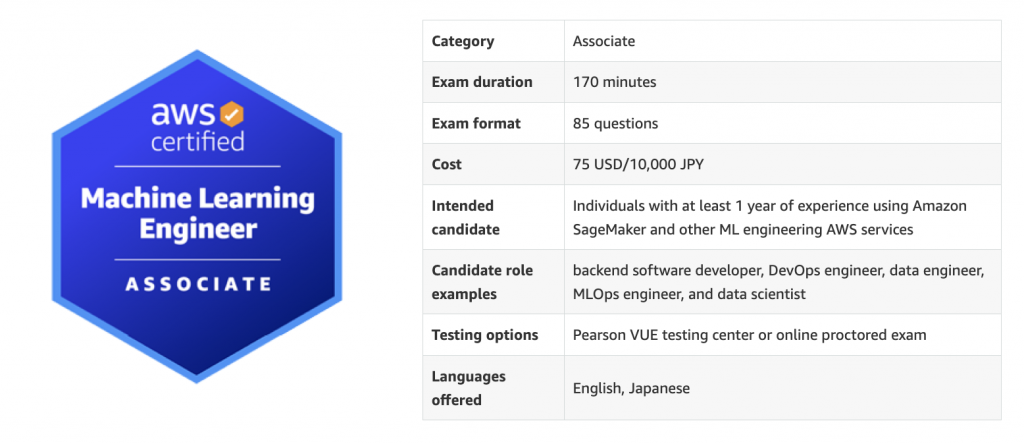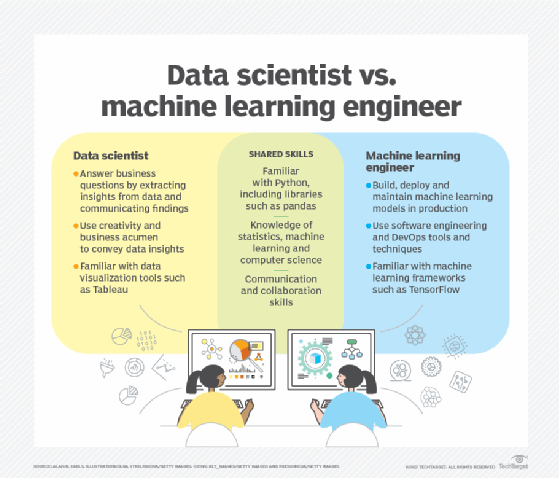All Categories
Featured
Table of Contents
- – Facts About Software Engineering Vs Machine Le...
- – The Definitive Guide to 7-step Guide To Become...
- – The Greatest Guide To Machine Learning Applie...
- – The Only Guide for Artificial Intelligence So...
- – See This Report about Software Engineering I...
- – The Best Guide To Training For Ai Engineers
- – Excitement About Artificial Intelligence Sof...
Some people believe that that's cheating. Well, that's my entire career. If somebody else did it, I'm going to use what that person did. The lesson is placing that aside. I'm compeling myself to analyze the possible services. It's even more concerning consuming the material and attempting to use those ideas and much less about discovering a library that does the job or finding someone else that coded it.
Dig a little bit deeper in the math at the start, simply so I can build that foundation. Santiago: Finally, lesson number seven. I do not think that you have to recognize the nuts and bolts of every algorithm prior to you utilize it.
I have actually been using neural networks for the lengthiest time. I do have a feeling of just how the gradient descent works. I can not describe it to you now. I would have to go and examine back to in fact obtain a better intuition. That doesn't imply that I can not resolve points using semantic networks, right? (29:05) Santiago: Trying to force people to assume "Well, you're not going to achieve success unless you can describe every information of how this functions." It goes back to our sorting instance I assume that's just bullshit recommendations.
As an engineer, I have actually worked with lots of, several systems and I've utilized many, numerous points that I do not understand the nuts and screws of just how it functions, although I comprehend the impact that they have. That's the final lesson on that thread. Alexey: The funny thing is when I consider all these collections like Scikit-Learn the algorithms they use inside to execute, for instance, logistic regression or another thing, are not the same as the formulas we study in equipment learning classes.
Facts About Software Engineering Vs Machine Learning (Updated For ... Revealed
Even if we tried to find out to get all these basics of machine learning, at the end, the formulas that these collections use are various. ? (30:22) Santiago: Yeah, absolutely. I believe we need a great deal a lot more pragmatism in the market. Make a great deal even more of an influence. Or concentrating on supplying worth and a little bit less of purism.

By the method, there are 2 different courses. I typically talk with those that wish to operate in the market that intend to have their influence there. There is a path for scientists which is totally different. I do not dare to mention that due to the fact that I do not know.
Right there outside, in the sector, pragmatism goes a lengthy means for sure. Santiago: There you go, yeah. Alexey: It is an excellent inspirational speech.
The Definitive Guide to 7-step Guide To Become A Machine Learning Engineer In ...
One of the important things I intended to ask you. I am taking a note to speak about ending up being better at coding. Initially, allow's cover a pair of things. (32:50) Alexey: Allow's begin with core devices and frameworks that you need to find out to actually transition. Let's say I am a software program designer.
I understand Java. I recognize SQL. I understand how to use Git. I know Bash. Maybe I understand Docker. All these things. And I find out about equipment understanding, it appears like a cool point. So, what are the core tools and frameworks? Yes, I enjoyed this video and I get encouraged that I do not require to obtain deep right into mathematics.
What are the core tools and structures that I require to find out to do this? (33:10) Santiago: Yeah, definitely. Terrific concern. I think, number one, you should start discovering a little of Python. Since you already know Java, I don't think it's mosting likely to be a massive shift for you.
Not because Python is the very same as Java, yet in a week, you're gon na obtain a lot of the distinctions there. Santiago: Then you obtain specific core devices that are going to be utilized throughout your entire job.
The Greatest Guide To Machine Learning Applied To Code Development
That's a collection on Pandas for information adjustment. And Matplotlib and Seaborn and Plotly. Those three, or one of those 3, for charting and presenting graphics. You get SciKit Learn for the collection of machine learning formulas. Those are tools that you're going to have to be making use of. I do not suggest simply going and finding out about them unexpectedly.
Take one of those courses that are going to start presenting you to some issues and to some core ideas of maker learning. I don't keep in mind the name, yet if you go to Kaggle, they have tutorials there for free.
What's excellent concerning it is that the only need for you is to know Python. They're going to offer a trouble and inform you exactly how to use choice trees to address that specific problem. I think that procedure is exceptionally powerful, due to the fact that you go from no device learning history, to understanding what the problem is and why you can not address it with what you understand right now, which is straight software application design practices.
The Only Guide for Artificial Intelligence Software Development
On the various other hand, ML engineers focus on building and deploying maker discovering models. They concentrate on training versions with information to make forecasts or automate jobs. While there is overlap, AI designers deal with even more diverse AI applications, while ML designers have a narrower concentrate on machine learning algorithms and their practical application.

Machine knowing engineers focus on developing and releasing equipment understanding designs into production systems. On the other hand, information scientists have a wider function that includes data collection, cleaning, expedition, and building versions.
As organizations progressively embrace AI and machine understanding modern technologies, the demand for experienced professionals expands. Equipment knowing designers function on innovative jobs, add to advancement, and have competitive wages.
ML is basically different from traditional software application growth as it concentrates on teaching computers to gain from data, instead of programming explicit policies that are executed systematically. Unpredictability of results: You are most likely made use of to creating code with foreseeable outcomes, whether your function runs as soon as or a thousand times. In ML, however, the results are less particular.

Pre-training and fine-tuning: Just how these versions are educated on huge datasets and then fine-tuned for particular tasks. Applications of LLMs: Such as message generation, sentiment analysis and details search and access. Papers like "Interest is All You Required" by Vaswani et al., which introduced transformers. On-line tutorials and training courses concentrating on NLP and transformers, such as the Hugging Face program on transformers.
See This Report about Software Engineering In The Age Of Ai
The capacity to handle codebases, combine changes, and settle problems is equally as essential in ML development as it remains in conventional software program tasks. The abilities created in debugging and testing software applications are highly transferable. While the context could transform from debugging application logic to identifying issues in information handling or design training the underlying concepts of methodical investigation, hypothesis screening, and repetitive improvement coincide.
Device knowing, at its core, is heavily dependent on stats and likelihood theory. These are essential for understanding how algorithms learn from data, make forecasts, and assess their efficiency.
For those thinking about LLMs, a complete understanding of deep knowing designs is valuable. This includes not just the technicians of neural networks however likewise the design of specific models for various usage instances, like CNNs (Convolutional Neural Networks) for image handling and RNNs (Recurring Neural Networks) and transformers for consecutive data and natural language processing.
You ought to understand these concerns and discover techniques for identifying, minimizing, and connecting about predisposition in ML designs. This consists of the potential influence of automated choices and the moral ramifications. Lots of designs, particularly LLMs, call for substantial computational resources that are usually given by cloud systems like AWS, Google Cloud, and Azure.
Building these skills will certainly not just assist in a successful change into ML but additionally make sure that programmers can add properly and sensibly to the innovation of this dynamic area. Concept is important, yet absolutely nothing beats hands-on experience. Start dealing with projects that enable you to use what you have actually found out in a useful context.
Join competitors: Join platforms like Kaggle to get involved in NLP competitors. Construct your tasks: Beginning with basic applications, such as a chatbot or a message summarization tool, and progressively raise intricacy. The area of ML and LLMs is quickly evolving, with new innovations and innovations arising on a regular basis. Remaining upgraded with the most current research and fads is essential.
The Best Guide To Training For Ai Engineers
Contribute to open-source jobs or write blog messages concerning your understanding trip and projects. As you get experience, begin looking for opportunities to include ML and LLMs into your work, or look for brand-new functions concentrated on these innovations.

Vectors, matrices, and their role in ML formulas. Terms like design, dataset, features, labels, training, inference, and recognition. Information collection, preprocessing techniques, model training, analysis procedures, and implementation factors to consider.
Choice Trees and Random Woodlands: Instinctive and interpretable models. Assistance Vector Machines: Maximum margin category. Matching trouble types with ideal models. Stabilizing efficiency and intricacy. Standard structure of neural networks: nerve cells, layers, activation features. Split calculation and onward proliferation. Feedforward Networks, Convolutional Neural Networks (CNNs), Persistent Neural Networks (RNNs). Image acknowledgment, sequence forecast, and time-series evaluation.
Continuous Integration/Continuous Deployment (CI/CD) for ML workflows. Design surveillance, versioning, and efficiency tracking. Discovering and addressing adjustments in model efficiency over time.
Excitement About Artificial Intelligence Software Development

You'll be presented to three of the most pertinent parts of the AI/ML self-control; managed discovering, neural networks, and deep discovering. You'll realize the distinctions in between standard shows and device understanding by hands-on advancement in supervised knowing before building out intricate dispersed applications with neural networks.
This training course acts as a guide to device lear ... Show Much more.
Table of Contents
- – Facts About Software Engineering Vs Machine Le...
- – The Definitive Guide to 7-step Guide To Become...
- – The Greatest Guide To Machine Learning Applie...
- – The Only Guide for Artificial Intelligence So...
- – See This Report about Software Engineering I...
- – The Best Guide To Training For Ai Engineers
- – Excitement About Artificial Intelligence Sof...
Latest Posts
How To Answer Business Case Questions In Data Science Interviews
Apple Software Engineer Interview Process – What You Need To Know
Data Science Vs. Software Engineering Interviews – What’s The Difference?
More
Latest Posts
How To Answer Business Case Questions In Data Science Interviews
Apple Software Engineer Interview Process – What You Need To Know
Data Science Vs. Software Engineering Interviews – What’s The Difference?